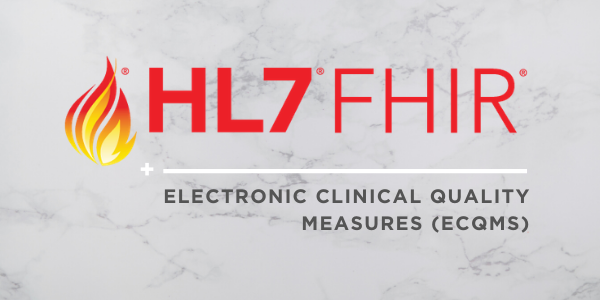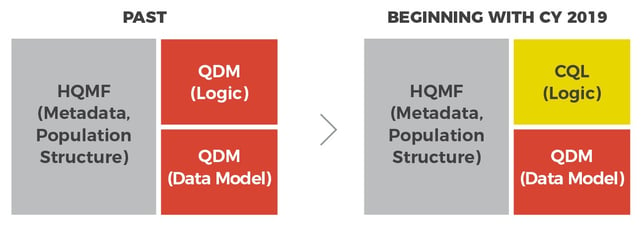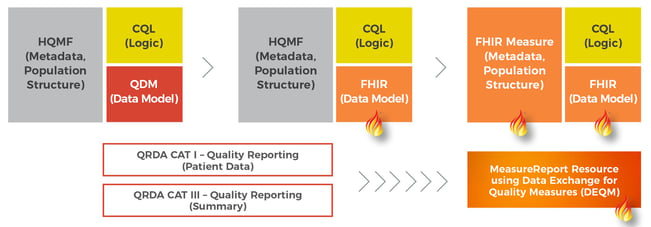
Measure development, as we know it, is changing. Quality improvement is important to keeping healthcare costs affordable and patients safe; however, it should not come as a huge burden to clinicians. Goals of electronic Clinical Quality Measures (eCQMs) include reducing the burden of manual abstraction and reporting for provider organizations, as well as fostering the goal of access to real-time data for bedside quality improvement and clinical decision support. We want to hit the “sweet spot” as depicted in this diagram:

Standards play a critical role in providing individuals and organizations with the tools to facilitate meaningful exchange of information. Subscribing to standards not only promotes organizational continuous improvement, but also enables comparable measurement against industry best practices.
For the 2019 reporting year, the Centers for Medicare and Medicaid Services (CMS) quality improvement programs grew one step closer to this goal by updating the expression language used for eCQMs to Clinical Quality Language (CQL) for the logic, in conjunction with the Quality Data Model (QDM) for the data model. Some of the perks of moving to CQL are:
- Improved expressivity
- More precise/unambiguous
- Ability to share logic across measures
- Ability to share logic with decision support
- Simplified calculation engine implementation
The diagram below depicts the former and current state of use of standards to support eCQM authoring:

The next step is moving to HL7 Fast Healthcare Interoperability Resources (FHIR)
to support the structure and exchange of eCQMs.
FHIR® STANDARDS FOR eCQMs

There is a great effort within the quality measurement community to map QDM to QI-Core extension of FHIR for measure authoring, with plenty of opportunity for engagement. The Clinical Quality Information (CQI) Work Group (WG) is leading efforts on the QI-Core extension in a few related project calls:
- CQL-based HQMF (Composite Measures in CQL) AND FHIR Quality Measure IG Discussion
- QUICK modeling review every other week on CQI WG calls
In collaboration, the Clinical Quality Information (CQI) Work Group and the Da Vinci Project are leading an effort to develop the new frontier of measure reporting in the Data Exchange for Quality Measures (DEQM), which will ultimately replace the Quality Reporting Document Architecture (QRDA) files in current use. The Da Vinci Project and CQI Work Group welcome others to get involved to learn more and make contributions to this important work. The ultimate goal is to measure quality to improve patient care without burdening the clinicians at the bedside. Involvement in interoperability solutions will assist us in getting there faster. It takes a village to make great strides, and any and all contributions are appreciated.
Click to learn more about the Da Vinci Project or the CQI Work Group.


.jpg?width=100&height=100&name=LISA%20ANDERSON%20(002).jpg)